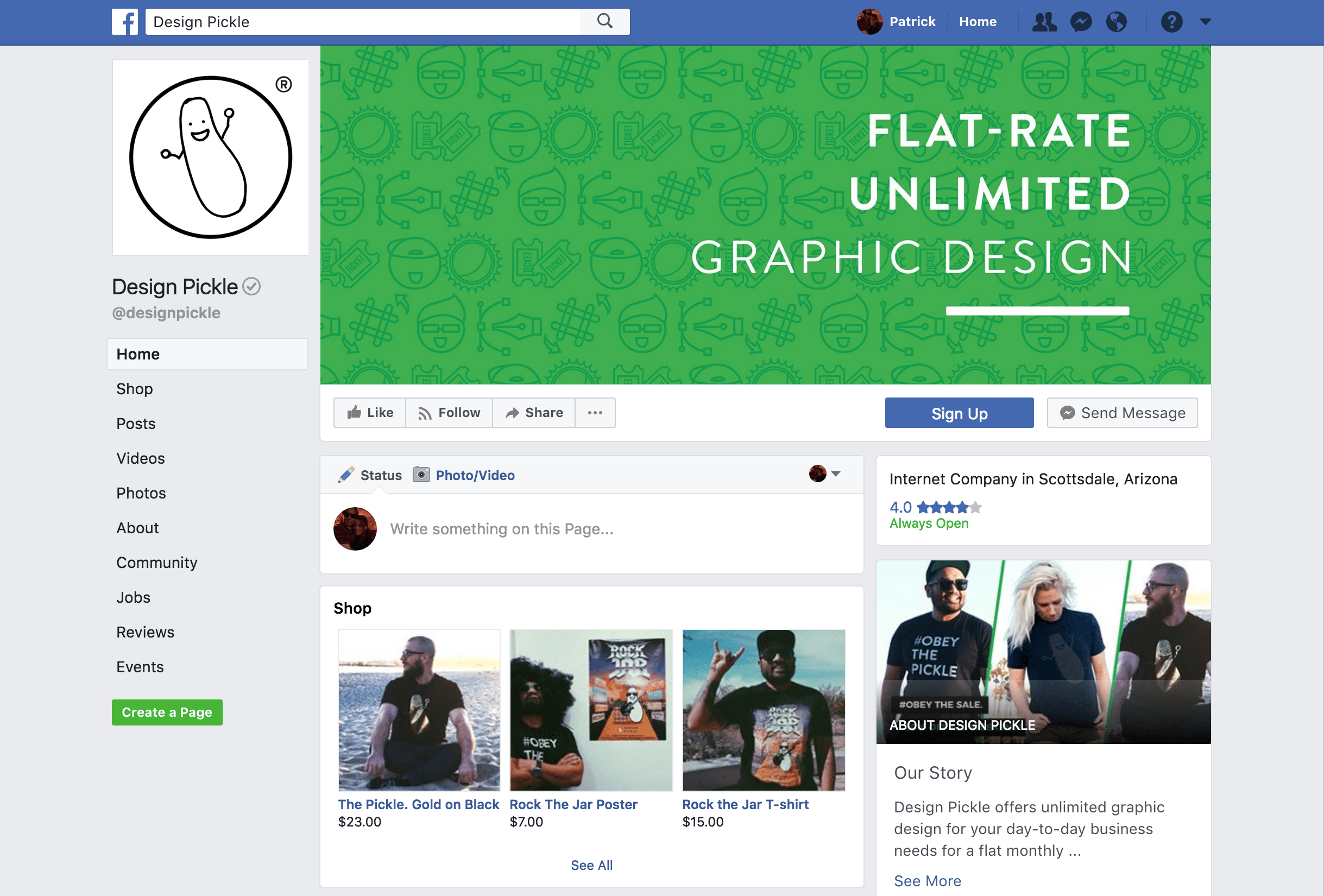
Are you trying to attract leads for your company on LinkedIn?
If so, you might’ve noticed that auto-posting blog links through Hootsuite or whatever automation you use isn’t getting the job done. The culture on LinkedIn has changed, and marketers need to adapt if they want to make an impact.
For the last six months I’ve immersed myself in this space, observing, networking, testing, failing, and succeeding.
I’m going to try to boil down (almost) everything I’ve learned in one post. It should take about ten minutes to read, and will deliver a payload of actionable takeaways for your strategy. Ready?
Make It Personal
As we mentioned in an earlier post about why companies are struggling with brand building, the biggest mistake people make on LinkedIn is not giving the brand a face.
The latest digital marketing trends all point towards the same sentiment: People are tired of companies talking at them.
Whether through social media, advertising, email, or any other channel – consumers have little interest in interacting with a brand unless that connection feels personal.
You’ve seen examples of this on other platforms. My favorites are the sponsored posts from Design Pickle on Facebook.

This company offers unlimited graphic design services for $370 per month, a bold stake in the market for sure. Predictably, they have drawn plenty of criticism from the design community who feel DP is devaluing their work, and these critics have no qualms about posting their thoughts.
Design Pickle’s social managers are all over them like a swarm of Texas fire ants.
Every comment gets a response, and if you troll them yours will be laced with biting sarcasm and attitude.
The comment threads are the most entertaining part of their content strategy. In a way, their “take-no-crap” responses have crafted their brand image as much as their service offering. I’m not suggesting you take a similar tact on LinkedIn. Being snarky is okay once in a while, but don’t overdo it. We don’t want any Negative Nellies around here.
The point is your company should be fronted by people, and they better show their personalities. Otherwise, your job of generating leads will be much harder.
{{cta(’17e6ab6f-71c7-43c5-b69e-92c78144e10c’)}}
Curating Your LinkedIn Network
The most difficult, yet critical part of marketing on LinkedIn is curating a good network.
Once you become active in this space, you’ll start getting connection requests from people all over the world, usually with no introductory message or context that indicates you share anything in common.
Whether or not you accept these requests is up to you – some people accept every request, while others are more discriminating – but if lead generation is your goal, you should put in some effort to curate your network so that it leads to opportunities. You might aim for a mix of:
- Influencers in your industry who can help amplify your message
- Existing customers who might offer referrals
- People who match your buyer personas
A healthy network will have a mix of all three types.
Before connecting with anyone though, check their profiles and make sure they are active and engaged on LinkedIn. That’s the one criterion I insist on. What good is adding someone to your network if they aren’t interested in being present and engaging?
Tools for Finding Leads

If you want to maximize the productivity of your network, you need to seek out people who fit your buyer persona and will be interested in your content.
While you can do some research using LinkedIn’s free search features, you’re going to get a lot further by using an app to do the heavy lifting for you.
LinkedIn Sales Navigator – This tool unlocks LinkedIn’s advanced sales features, allowing you to search, filter, and save target leads for your business. It also provides deeper insights that can help you create a more personalized approach in your outreach. This app is great, but prepare to buck up. A subscription costs $65 a month with annual billing.
AngelList – AngelList is a tool that connects job seekers to startups. It’s also a great way to research LinkedIn user data without having to comb through individual profiles, which can actually get you banned from the platform. This tactic is a growth hack perfected by our friends at BAMF. You can get instructions on how to it here.
Create a LinkedIn Marketing Strategy
Now comes the fun part! Executing a LinkedIn marketing strategy is one of the most enjoyable activities I’ve ever done on social media, but it requires a real commitment. Flying by the seat of your pants is no way to win on the noisy internet.
Optimize Your Profile
The first step is writing a headline that gives you the best chance of getting found on search, and a profile description that conveys authority and speaks to the core needs of your buyer persona. Include calls-to-action that link to conversion pages on your website, Messenger chat, and any other channels that make communication quick and easy with potential customers.
Tim Queen and Chris Williams, two of my favorite marketers on LinkedIn, each have published awesome lists which I’ve edited and added to here:
Every Month
- Review your engagement metrics and set goals for your next stage of growth
- Brainstorm new topics to write about (posts and articles)
- Research new industry trends to highlight in your content
- Identify influencers in your industry
- Plan your LinkedIn management schedule around other priorities in your business
- Publish at least one article on LinkedIn
Every Day
- Create content daily, or at least several days a week. Many people find success with a mix of native posts, articles, and videos. Produce your posts a week ahead of time to remain consistent. Avoid posting links to your blog unless you add it in the comments.
- Creating videos is important! Limit your posts to one thought and keep it short – two minutes or less. Hire someone on Fiverr to transcribe and put subtitles in each video. Many people do not activate the sound feature when they watch.
- Revisit important contacts you’ve fallen out of touch with and engage them in chat.
- Pick at least one new person to chat with or call every day. Get to know them without being salesy.
- Schedule time to comment on other posts and reply to comments on your own at least twice a day, once in the morning, once in the late afternoon. Make sure you add value to the discussion with unique and thoughtful remarks. Don’t just jump in with a virtual high-five. That’s lame and will tell people you are a follower, not a creator.
What Should You Post About on LinkedIn?

1. Share a new tactic you have tested, and what the results were. This shows you are an innovator that constantly tries new things. It doesn’t matter if you didn’t come up with the tactic yourself. You can help a lot of people who don’t have the time or the drive to research new methods on their own.
2. Talk about your failures and struggles, and what you learned from them. People love this content because it’s honest and shows vulnerability. Everyone is on a journey. Talk about yours, including mistakes you’ve made. It’s okay to be open, but make sure there’s a positive conclusion.
3. Share your recent successes. Just like failures, people love to hear about achievements. Share the ones that will boost your credibility, but don’t be too bombastic. Clickbait headlines like, “How we took our startup from zero to a three million dollar business in one year” are tiresome and phony sounding. Approach these “success posts” with confidence and humility, sharing how you got there so others will learn from it.
4. Offer a fresh perspective on solving common challenges. I see a lot of great content about embracing new ways of doing things. The recruiting industry is full of people talking about how to better evaluate candidates, manage the interviewing process, and onboarding new employees. Find a painful nerve in your industry and introduce newer, more progressive ways to soothe it.
5. Interview someone in your network and post about them. Sharing what you’ve learned about someone in your network is a great way to keep your content fresh and interesting. It will also build goodwill and increase your reach with your interviewee’s connections. Do it on video. This is a win, win!
6. Highlight employees in your organization. This is a great way to introduce your company to the LinkedIn community. The people in your network already feel a strong connection with you. They also be curious about the people you work with. This is another approach you should always execute in a video interview.
Be Present, Be Interesting, Be Real
This should go without saying in 2018, but the days of corporate speak are over.
Authenticity, transparency, and helpfulness rule the day on LinkedIn. If you are planning to go there and pitch people your products and services, let me advise you to go hiking or fishing instead.
LinkedIn is a network of professionals that are all striving to connect with potential customers using content that inspires, educates, or shares a laugh. The only way to stand out is by engaging people in real time, posting content that’s relevant to their lives, and, most important of all, by showing your personality.
Demonstrate who you really are and what you are made of, and slowly but surely, leads will follow.
Best of all, they’ll feel like they already know you. Because they do.
{{cta(‘0ac491b1-b36c-4107-b043-3e54bbb4bcba’)}}

